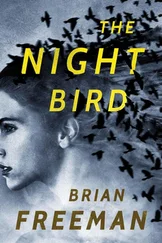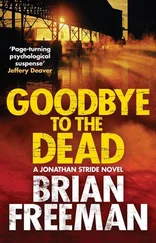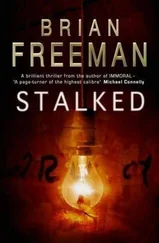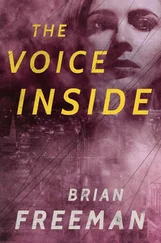“Maybe I heard wrong,” she teased him. “Didn’t Sawhill say the case was closed?”
Stride smiled. “Did he? I must have misheard him.”
Serena dragged another chair across the worn gray carpeting and set it down next to him. Stride noticed several of the men in the library watching her. The midday crowd in the library was almost all men, unemployed, in jeans and baseball caps. Some made a show of reading the newspaper. Others simply stared into space.
“Find anything?” Serena asked.
Stride shrugged. “You have to read between the lines. It’s mostly rumor and innuendo. There was a gossip column back then that dropped some broad hints. I think that’s where Rex Terrell picked up a lot of the details for his story in the magazine.”
“Don’t get me wrong, Jonny,” Serena told him. “I trust your instincts, but I’m not sure I see the connection. I don’t know how you take a 1967 murder that was supposedly solved and draw a line to MJ’s death today.”
“Maybe you don’t,” Stride admitted. “There may be nothing in this. But I’m like you. I don’t like coincidences.”
“Such as?”
Stride leaned back in the chair. “Here’s what I have. MJ starts nosing into the murder of Amira Luz, because he reads allegations in LV magazine that his father was the one who killed her. Shortly thereafter, MJ winds up murdered himself. The murder of Amira took place at a casino owned by Boni Fisso, who may or may not have ties to organized crime and who is set to break ground this year on a new two-billion-dollar development project. How’m I doing?”
“You have my attention,” Serena said. “First question: Who was Amira Luz, and why was she killed?”
Stride nodded. “Amira was a nude dancer, and very good at it, according to the papers. They called her Spanish, but I found a bio that said she was actually half Spanish. Her father was a Spanish diplomat, and her mother was the blond bombshell daughter of a Texas congressman. When Boni Fisso opened the Sheherezade in late 1965, Amira was eye candy, twenty-one years old, in a show built around a comedian. Guess who?”
“Moose Dargon,” Serena guessed.
“Exactly. Another interesting coincidence. Anyway, Amira is a big hit. By May of 1966, she has her own show, Lido-style, backed up by a chorus line of wannabes. Toward the end of the year, Amira went off to dance in Paris for six months. Or maybe she was over there planning her next act. Regardless, by June of‘67, Amira is back in Las Vegas at the Sheherezade in a whole new show called Flame , and she’s bigger than ever.”
“Until someone kills her,” Serena said.
“Right. A few weeks after the show opens, Amira winds up murdered in a penthouse suite at the Sheherezade. By the way, Moose wound up as a supporting act in Amira’s new show and lost his solo gig. I don’t imagine he was too happy about it.”
“Go on,” Serena said.
“Now let’s look at Walker Lane. He filmed one of his movies in Vegas during the spring and got hooked on the city. Soon he was a regular, flying here every weekend from L.A. His favorite watering hole was the Sheherezade. Walker was tight with Boni Fisso. And Rex had it right, too: The gossip columns in June suggested that Walker had his eye on ‘a Latin beauty regularly seen on the Vegas stage.’ Amira.”
“So what’s the theory?” Serena asked. “What happened to Amira?”
“Try this. Walker gets carried away in his suite when Amira rejects him. Or maybe rough sex gets out of hand. She winds up dead. Then Boni helps Walker get away clean and finds a patsy in L.A. to take the fall.”
“Why’d Walker stay away after the police closed the case?” Serena asked.
“I don’t know. Maybe Boni had a secret deal with the cops back then that Walker wouldn’t set foot in Vegas again. Anyway, it’s ancient history until Rex Terrell drags the story into LV and brings up all the old rumors about Amira, Walker, and Boni. Then MJ gets hold of it and starts asking questions.”
“And gets killed.”
Stride nodded. “I keep coming back to Boni’s plan to implode the Sheherezade and launch the Orient project. The last thing you want to deal with when you’ve got that kind of money on the line is a skeleton in the closet from forty years ago. Like Amira’s murder.”
“I hate to point this out, but Sawhill doesn’t want you asking questions about this. What are you going to do?”
“Ask questions about this,” Stride said.
Serena laughed. “You could wind up the fastest-hired, fastest-fired detective in Metro history. Come on, let’s get out of here, and you can buy me lunch.”
“Deal.”
Stride gathered up his copies and shoved them inside his blazer pocket. He stacked the boxes of microfiche together and balanced them unsteadily. “Can you grab that copy of LV? That’s the one with Rex Terrell’s article.”
Serena picked up the magazine. One of the pages had a Post-it note, and Serena opened it to look inside.
“That’s Amira,” Stride told her.
There was a large black-and-white photograph in the magazine from the 1960s, with Amira in a sexy Spanish black dress, her black hair spilling across her sweaty face, her hand pulling up her skirt to reveal her bare, muscular leg. Behind her, in white, another showgirl struck a similar pose.
Stride dropped off the boxes with the librarian. He looked back and realized Serena hadn’t moved. She was holding the magazine in her hands, staring at it.
“What is it?”
Serena didn’t seem to hear him. Then she folded the magazine back and pointed at the photo.
“This girl in white behind Amira. That’s Peter Hale’s grandmother. The boy who was killed in the hit-and-run.”

***
Breaking into the car was child’s play.
He waited in the backseat of the Lexus, parked in the shadows of the underground ramp at the Fashion Show Mall. His gun, a SIG-Sauer.357, was on the seat beside him.
The Lexus was near the entrance to Nieman’s. Of course. She was a fashionable lady. Seventy-five years old, widowed. Thin as a bird. She parked in a handicapped spot, because she had arthritis in her legs. The windows of the car were smoked, and no one could see inside. But he could see out and see her when she came.
He caught a glimpse of himself in the rearview mirror. He found himself staring back at his own dark features: thick black hair, heavy beard line, and his eyes, so deep brown they appeared to have no color at all. He scared people with his eyes. He always had. It was as if, when they looked into his eyes, they were inside a closet, black, without light, with the walls closing in.
He was like his eyes. Without emotion. Focused only on his goal.
Except he knew that wasn’t true when it came to the boy. Peter Hale. He had felt something then, despite all his training, despite the soldiers who had showed him how to view pain and death through the lens of a microscope. Study it. Learn from it. But feel nothing.
He did feel something about the boy, so much that he changed his plan in the middle, which he never did. He changed targets.
His plan had been the mother. He took the boy instead.
No one would know about his lapse except himself, but it bothered him. He didn’t like to think that he was a creature of anger anymore, not like in the old days. Those creatures made mistakes. He was a strategist, a mercenary in the field, with a goal and a plan.
He saw the doors that led to the ramp elevators open, and the old woman came out, shopping bags in both hands. She walked gingerly. Each time her right foot came down, she winced, feeling pain in her joints. He could see her clearly, but she couldn’t see him, not when she approached the car and put the bags in the trunk, not when she fumbled with her keys by the driver’s door. The ramp was dark, and the car was dark. Even when she pulled open the door and maneuvered her frail body inside, she didn’t see him. She pulled the door shut. He was right behind her, watching her. He heard her exhale, sighing, the pressure finally off her feet.
Читать дальше













